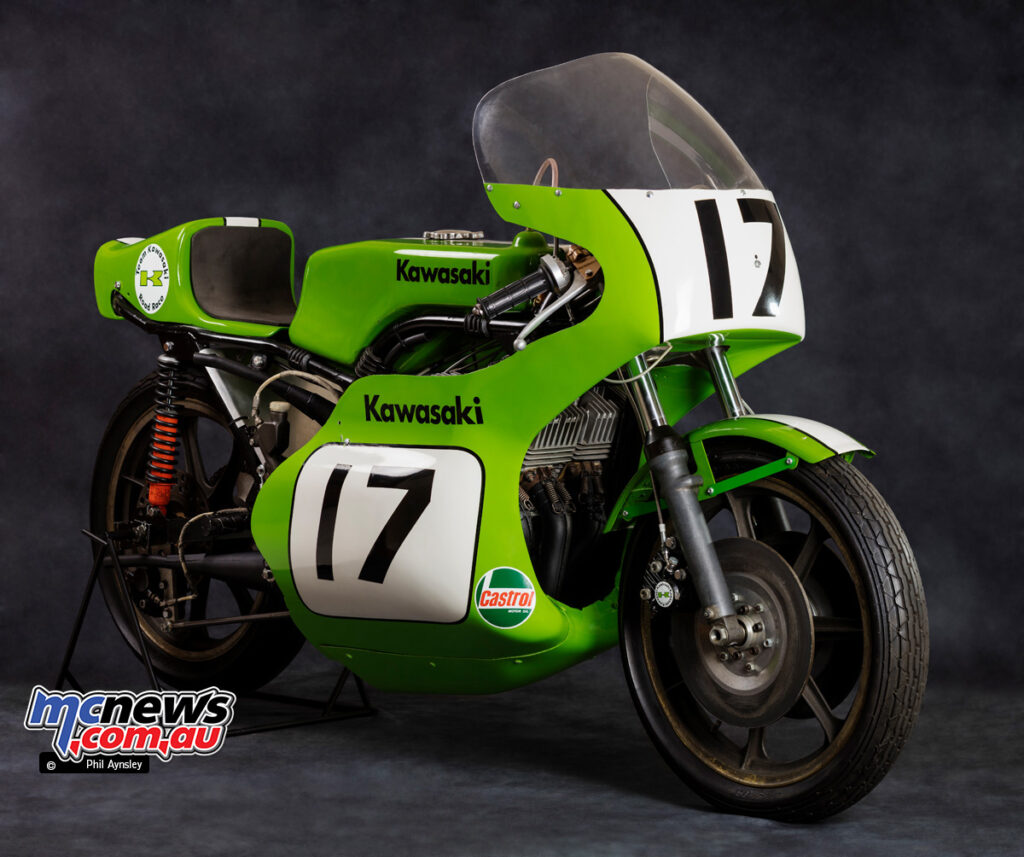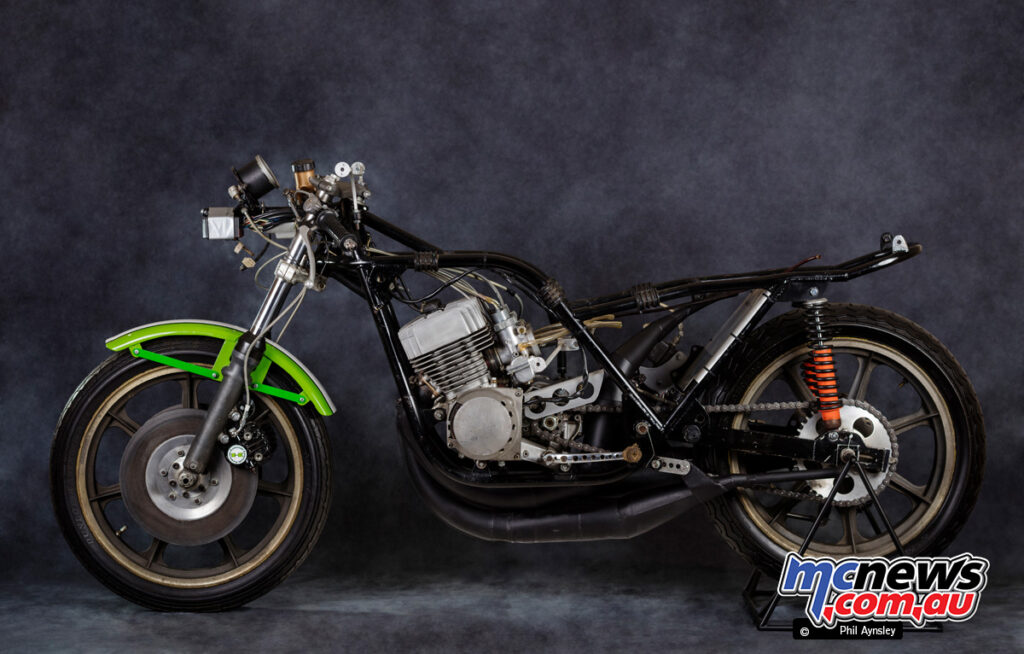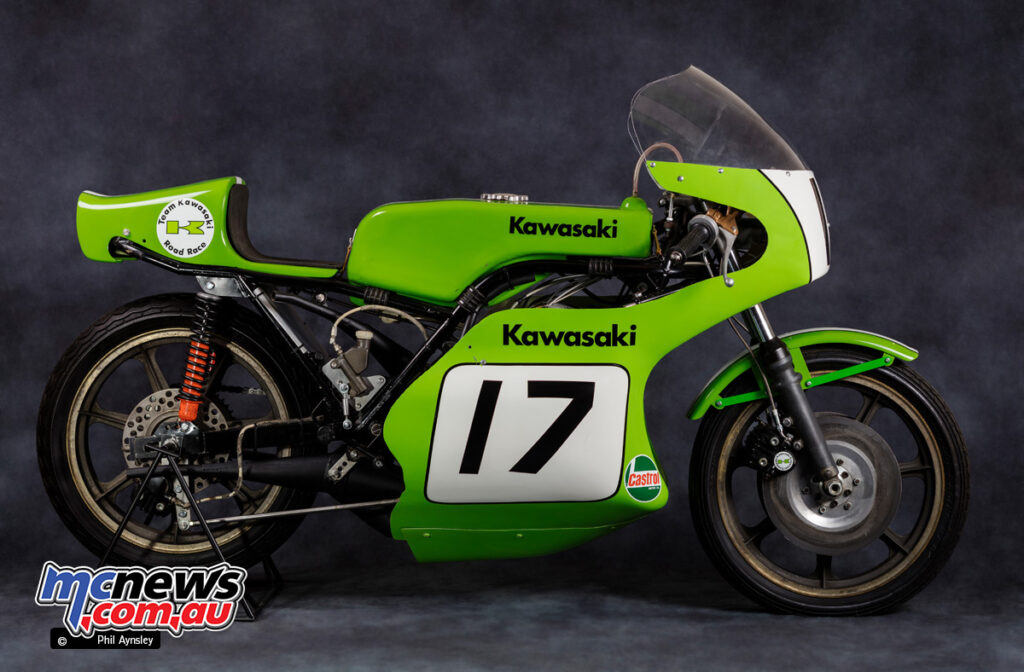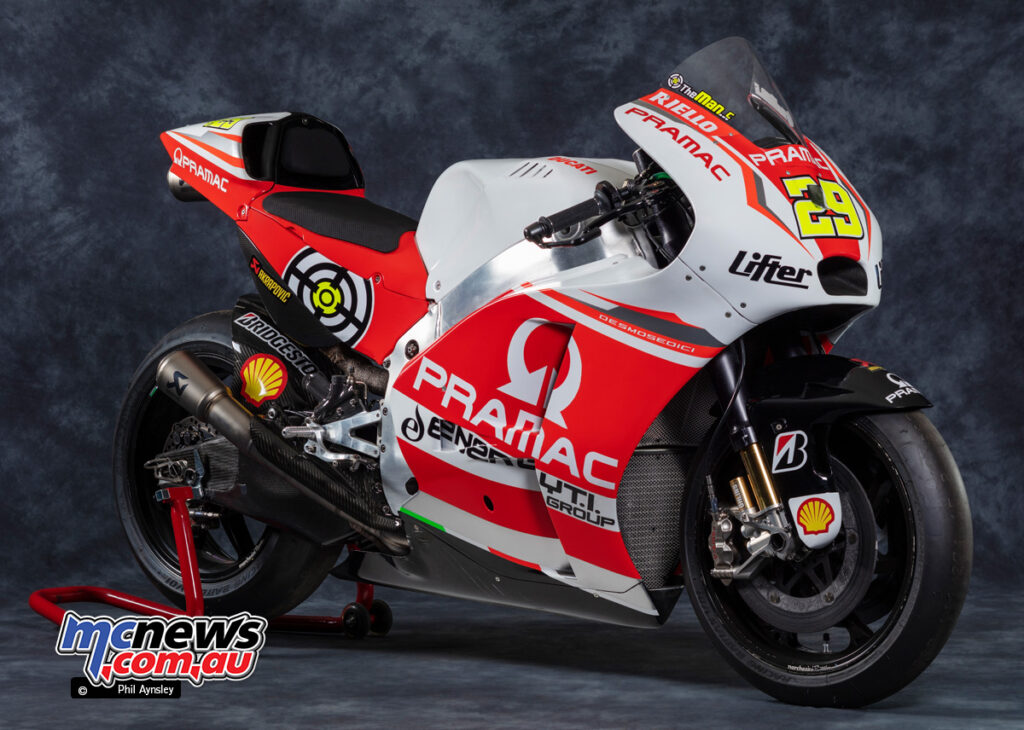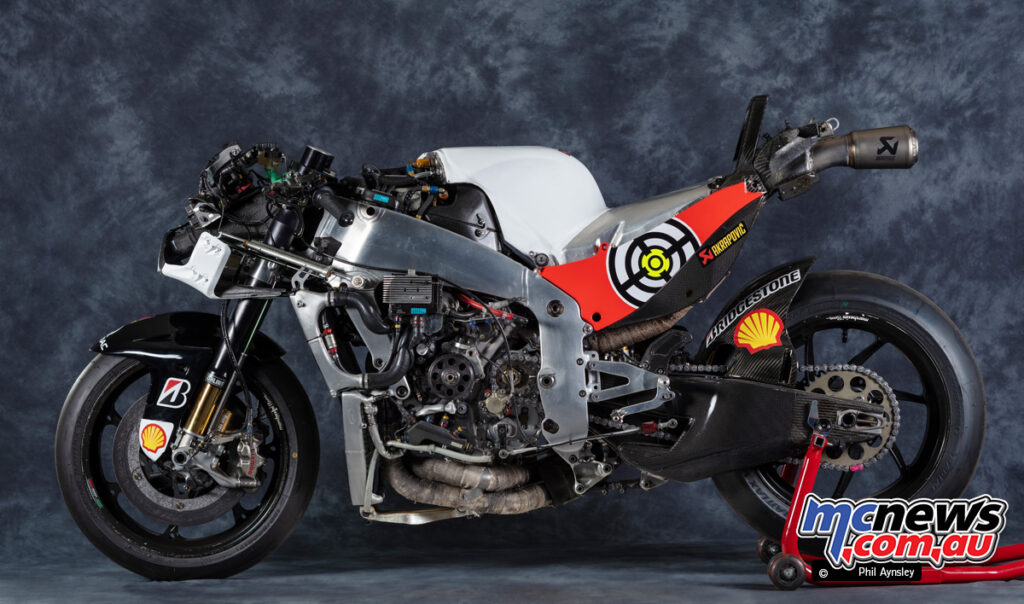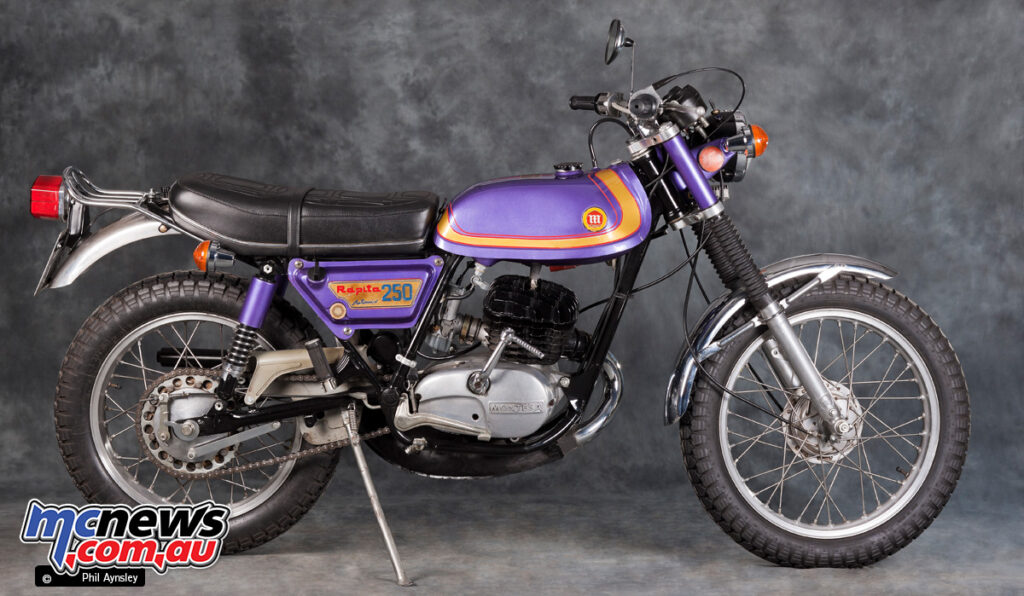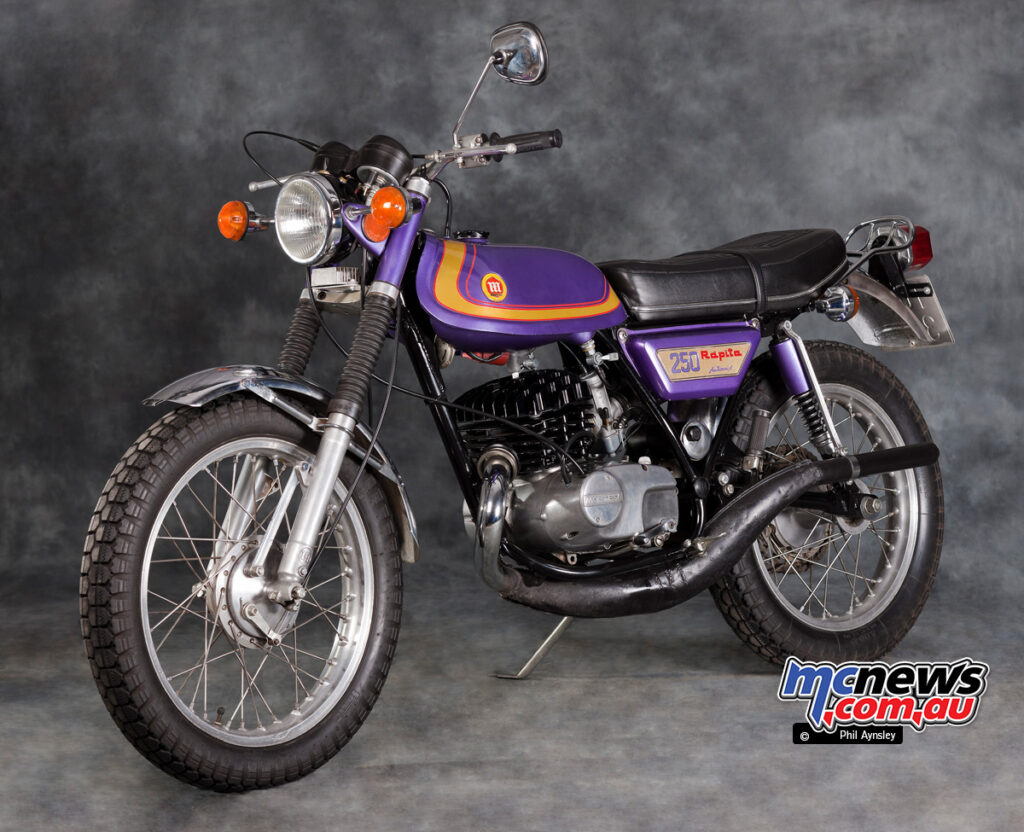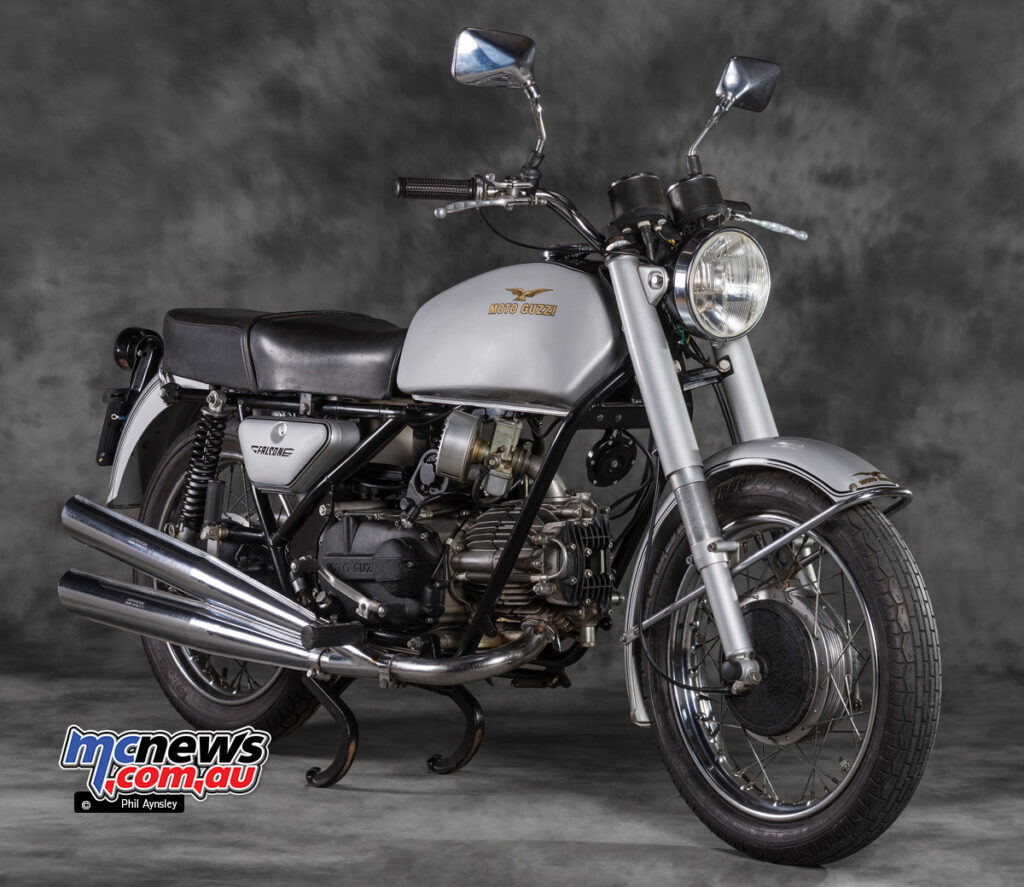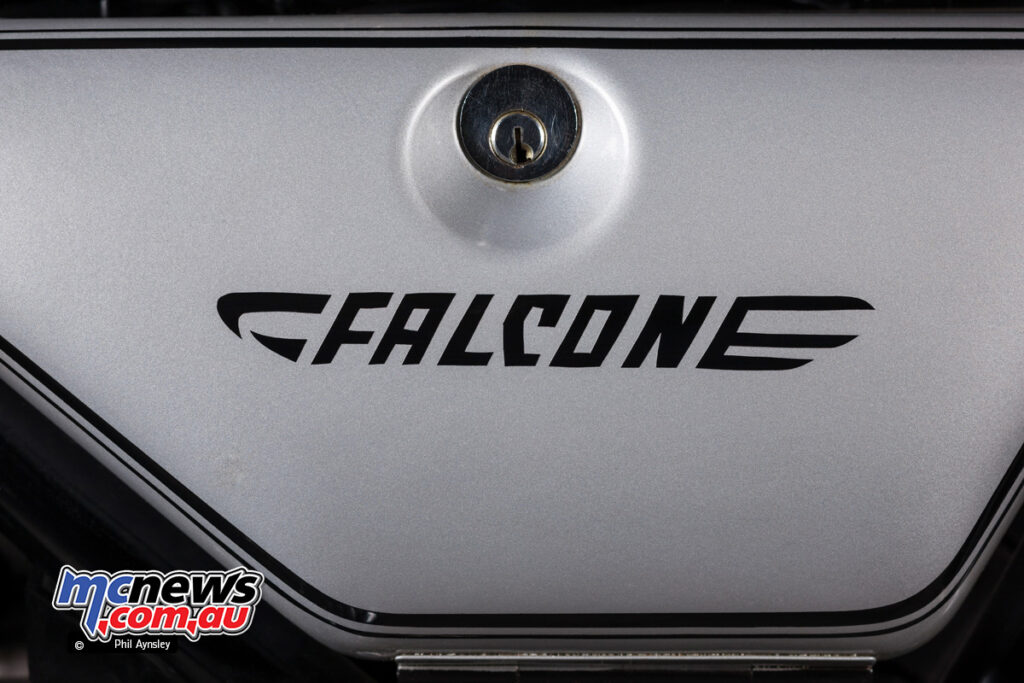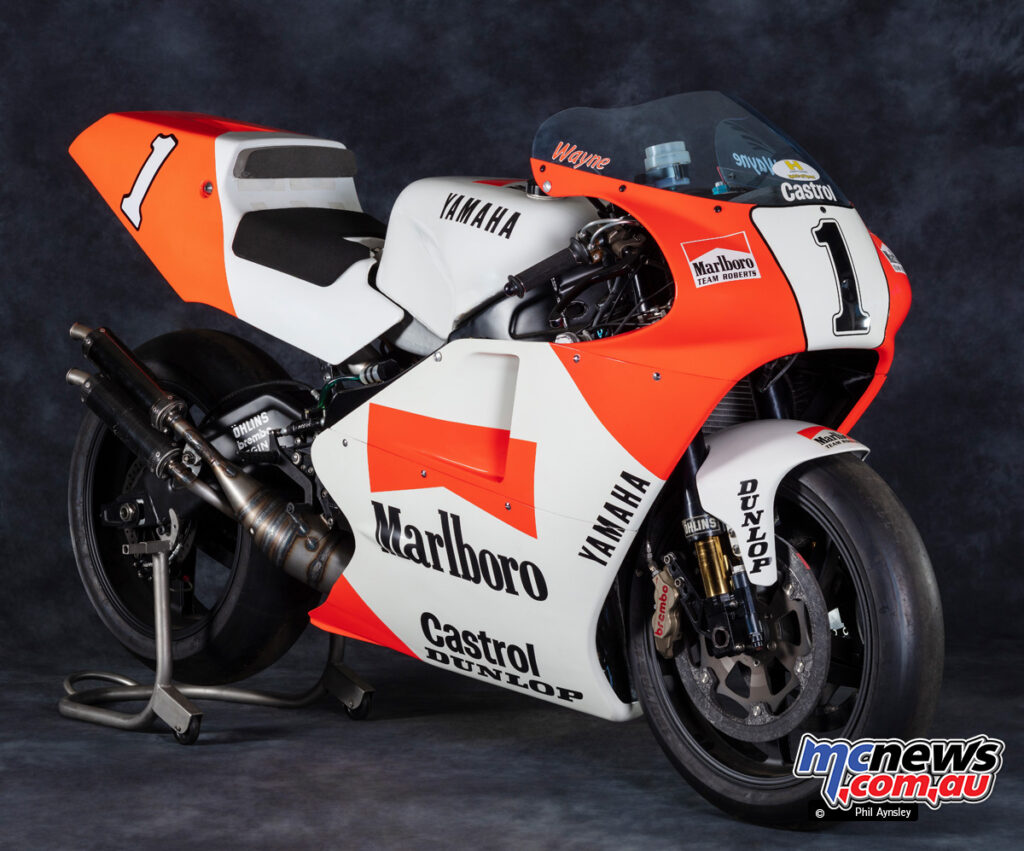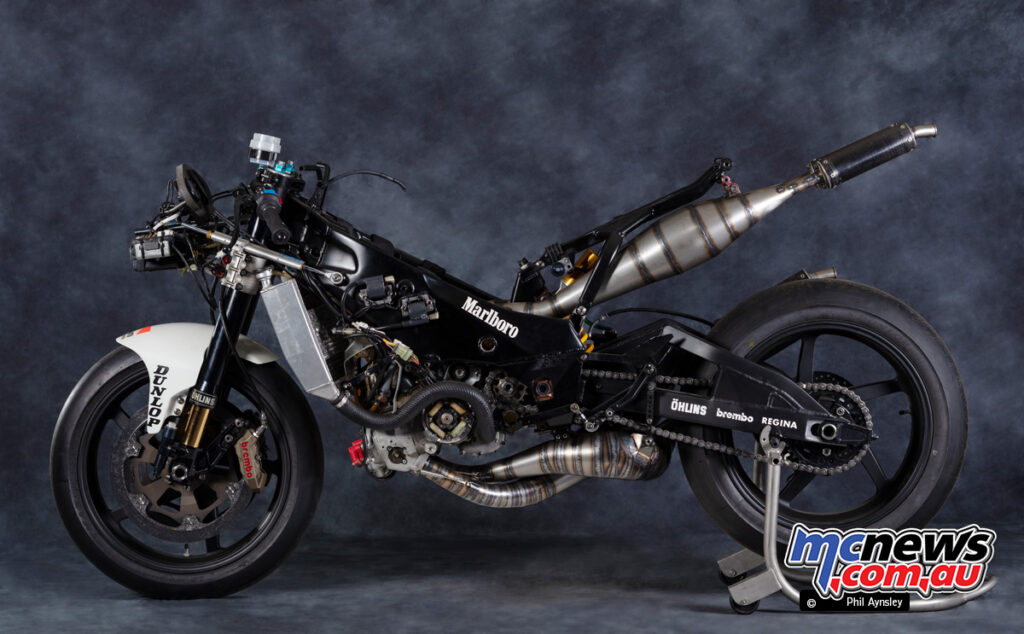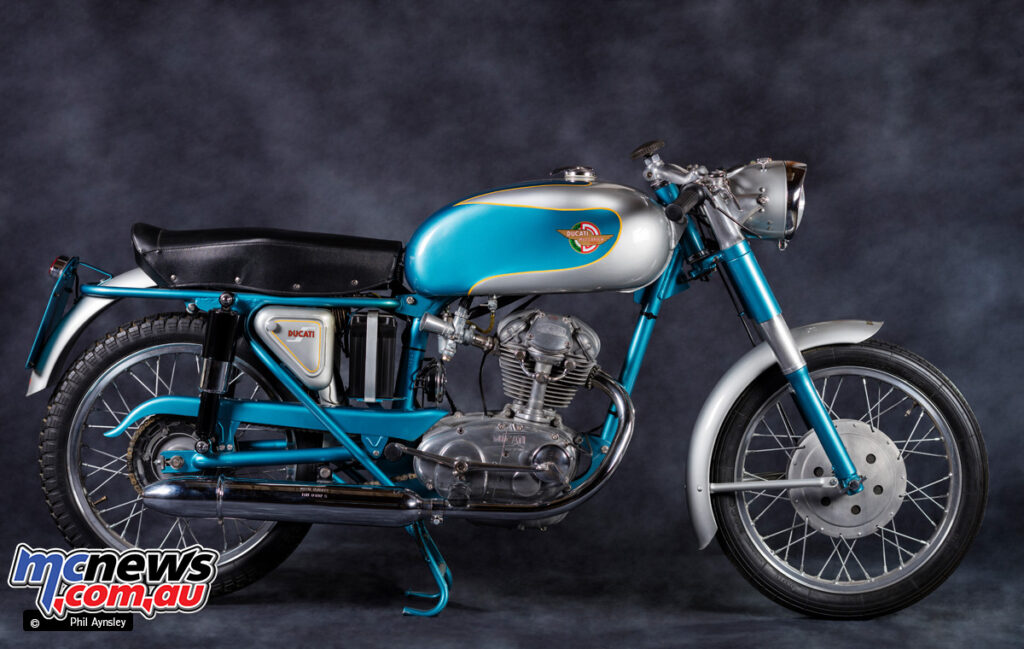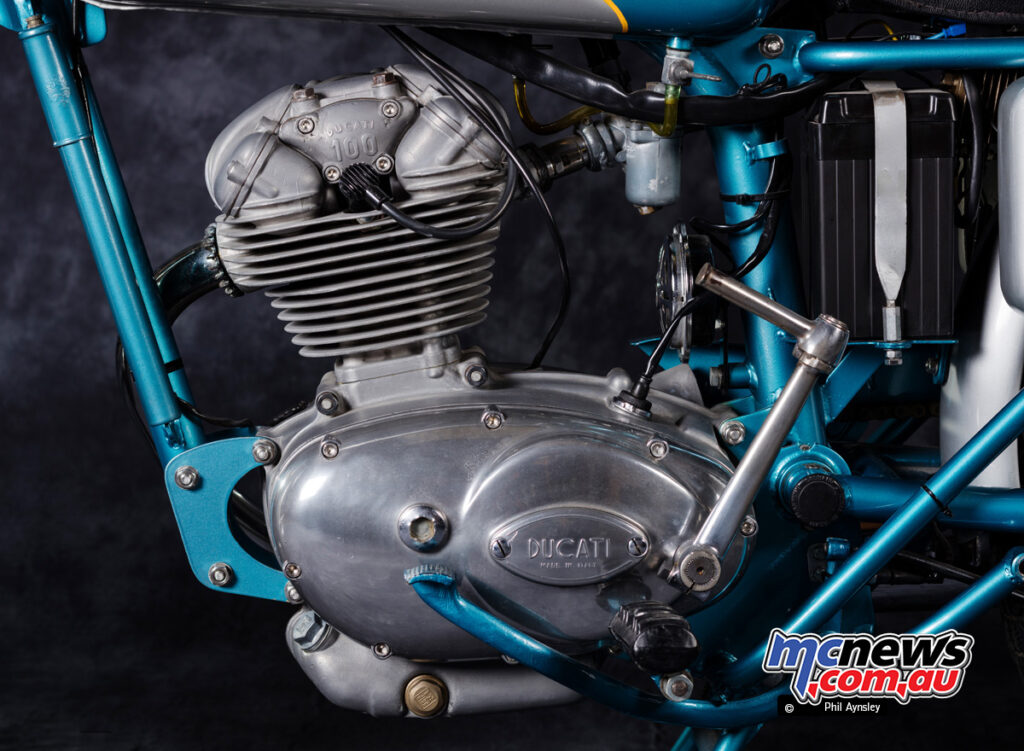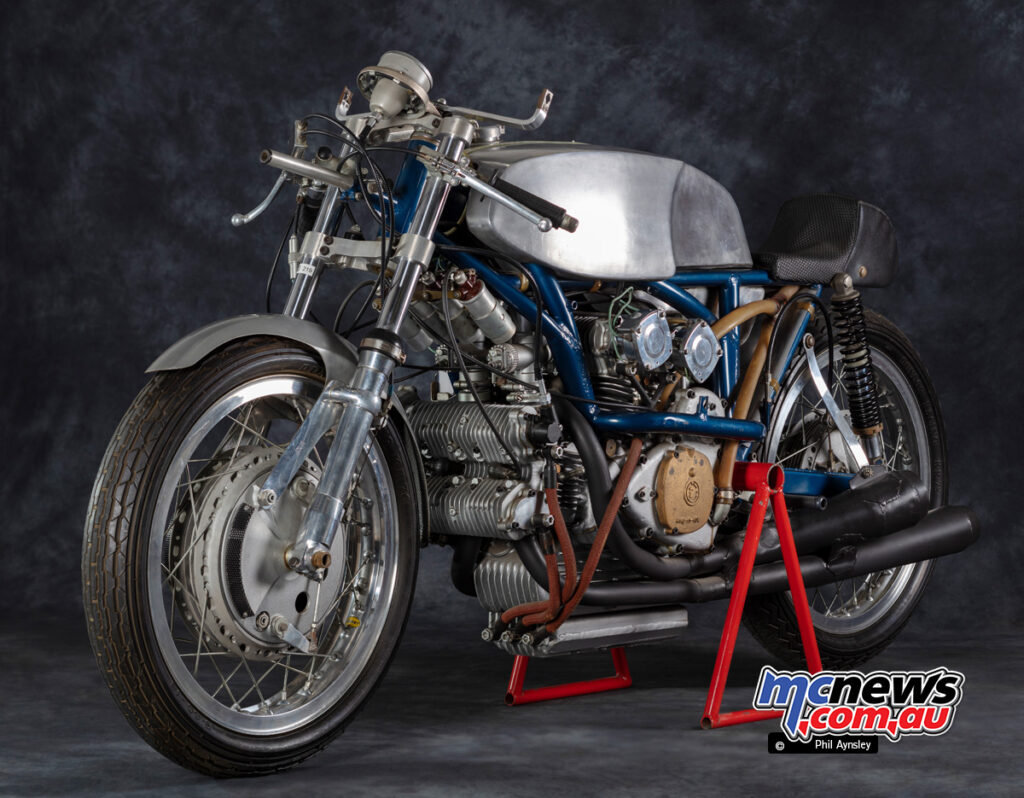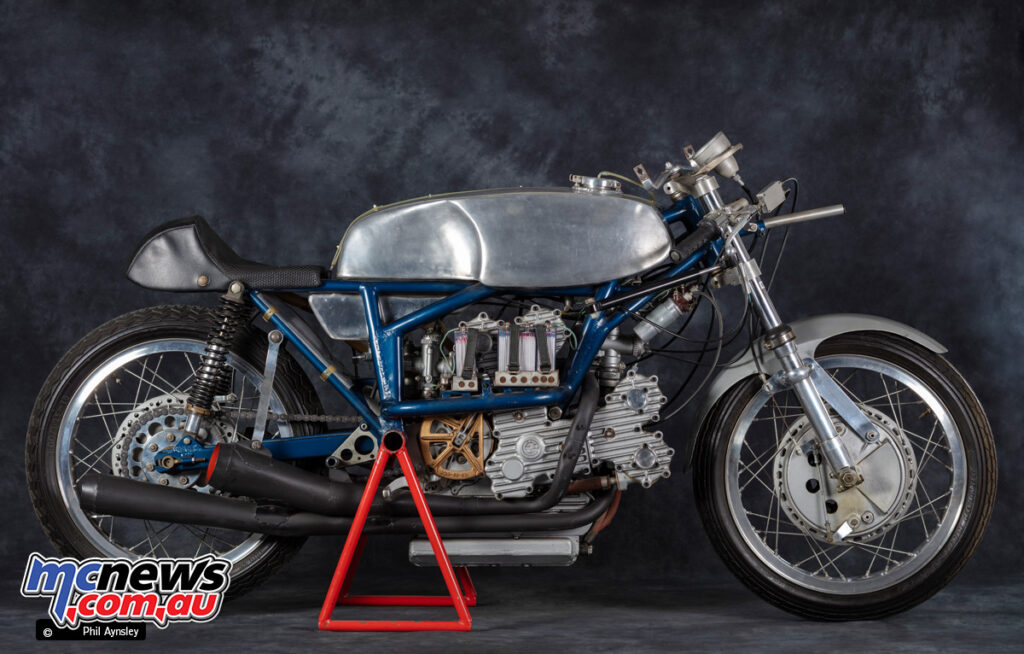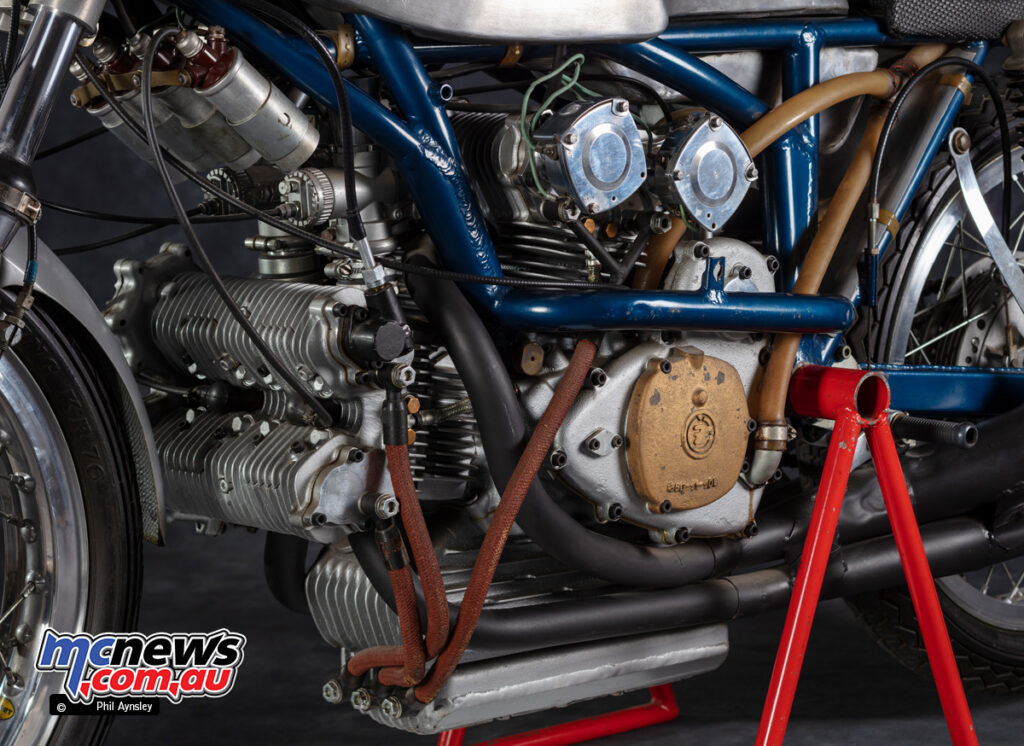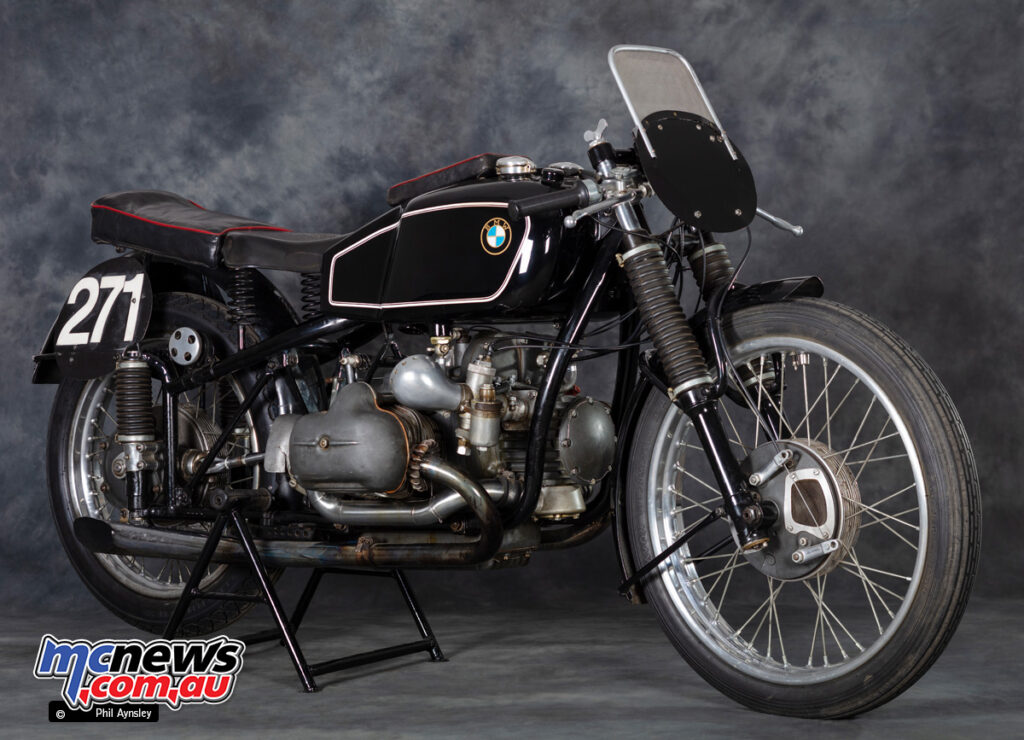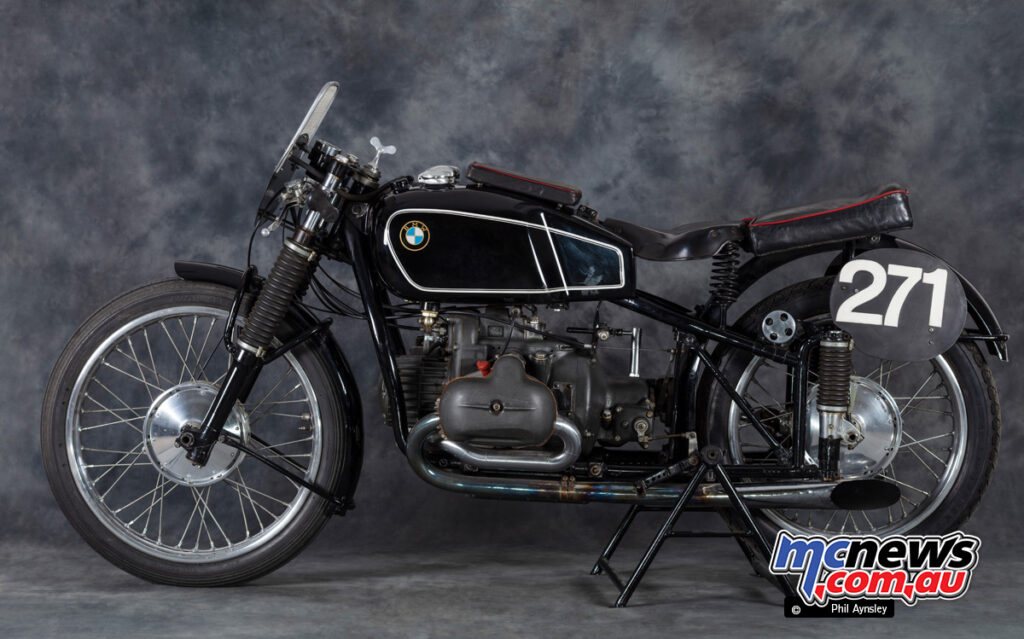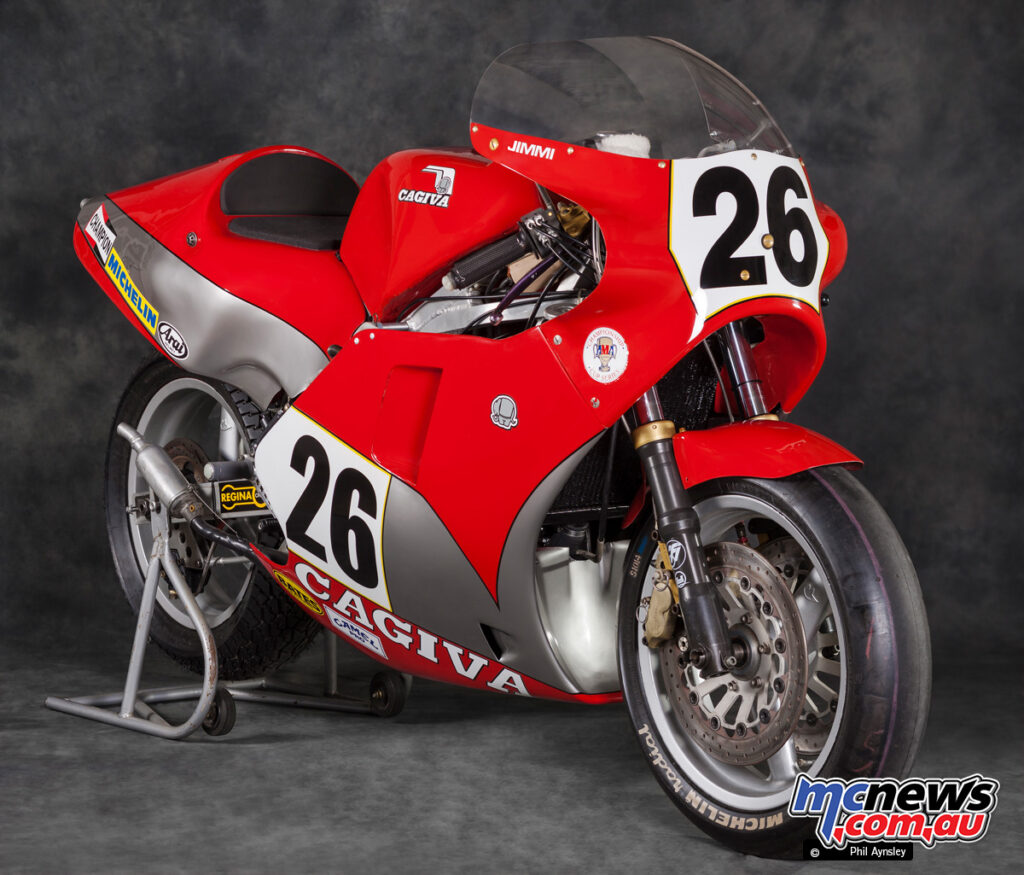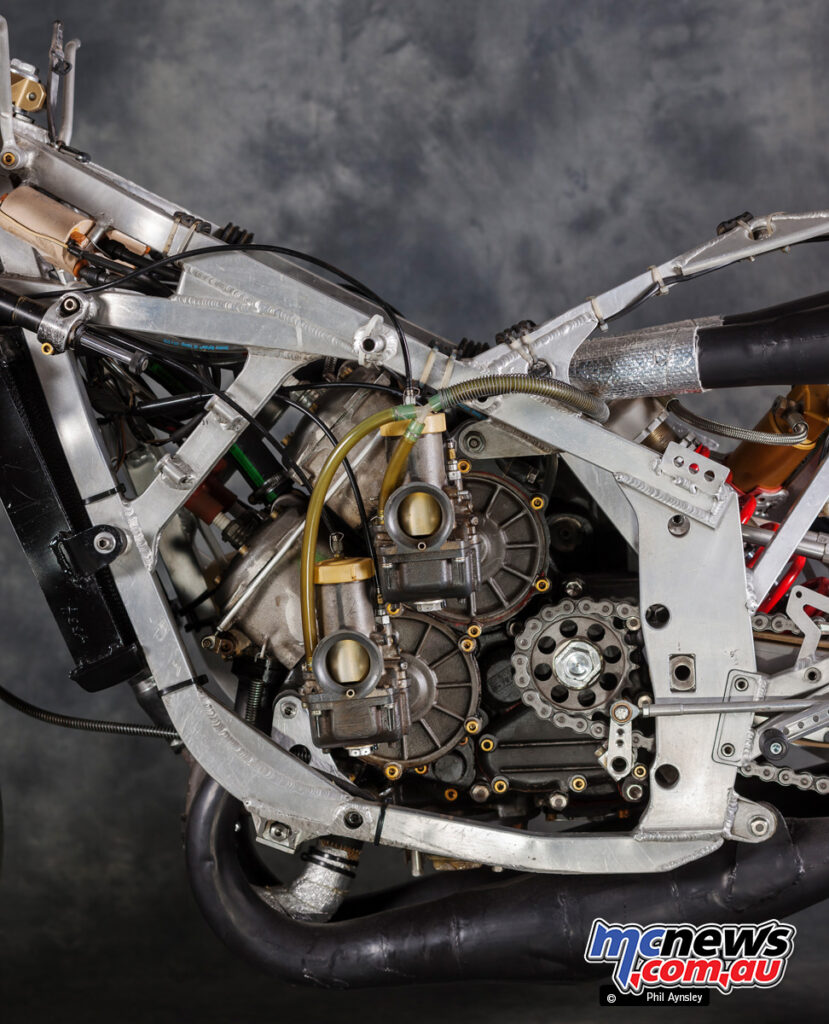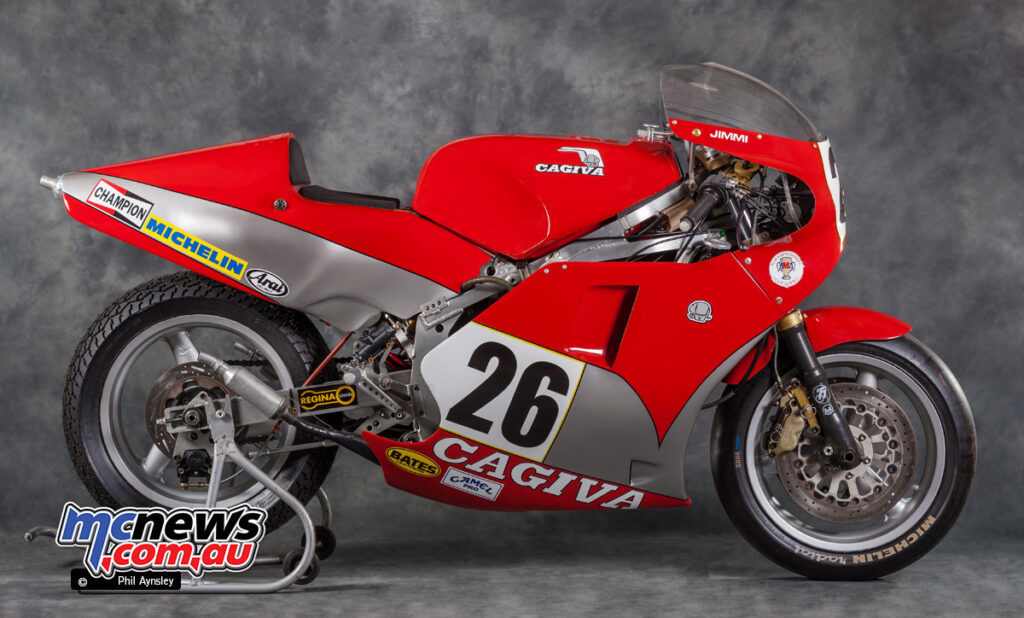Roland Schnell Parilla OHC 350 Racer
With Phil Aynsley
Giovanni Parrilla was born in southern Italy in 1912 but later moved to Milan to begin work as a mechanic working on diesel injection pumps. In 1946 he went into the motorcycle business (dropping one of the ‘r’s from his name) with two new OHC 250cc racing bikes, designed by Guiseppi Salmaggi (ex-Rumi).
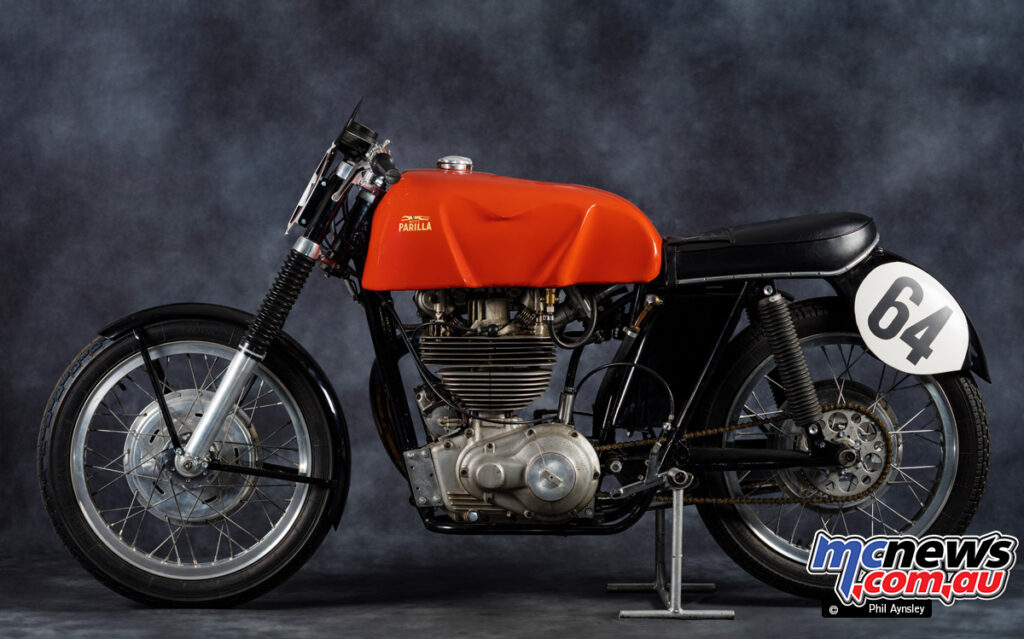
German racer Roland Schnell was active before WW II and resumed his career afterwards. In 1949 he bought a Parilla racing bike then proceeded to heavily modify it by converting the chassis to a swinging-arm rear-end and fitting new front forks of his own design. In addition he used a new cylinder and head, also of his own design.
After witnessing Schnell’s successful race meeting at Monza in 1950, Giovanni Parrilla called into his workshop and, impressed, offered Schnell a job during the off season in his factory.
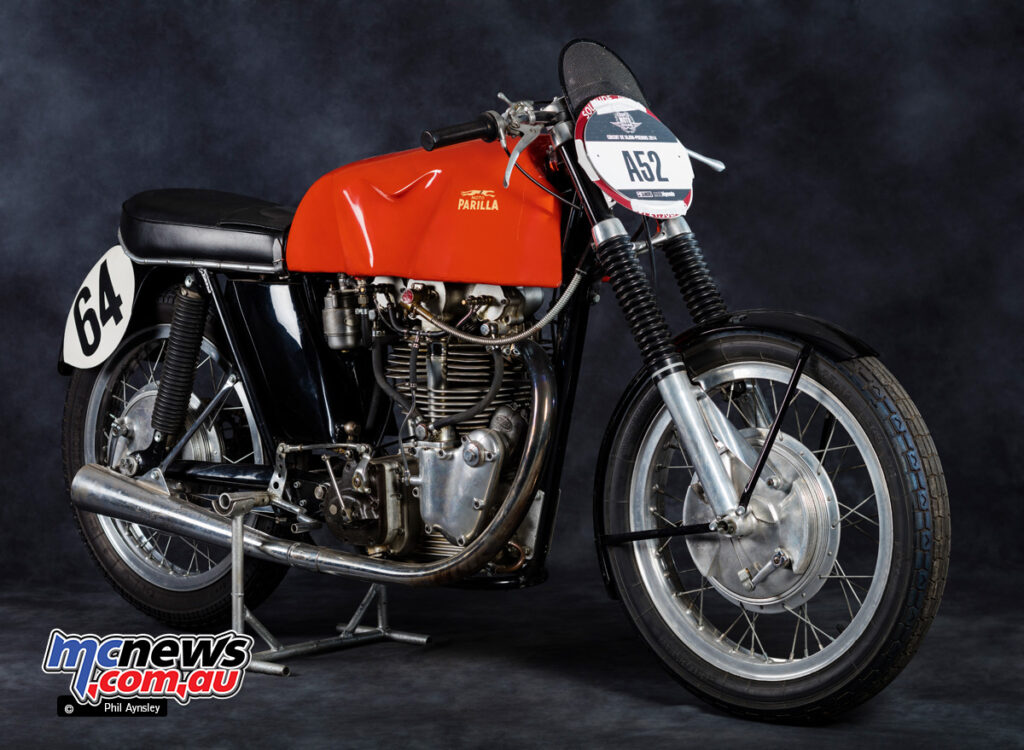
The following year Schnell won two international races in Madrid and Schaffhausen (Switzerland) as well as winning the German championship on this bike. It was sold the following year and has passed through seven owners since but remains in completely original condition.
Source: MCNews.com.au

